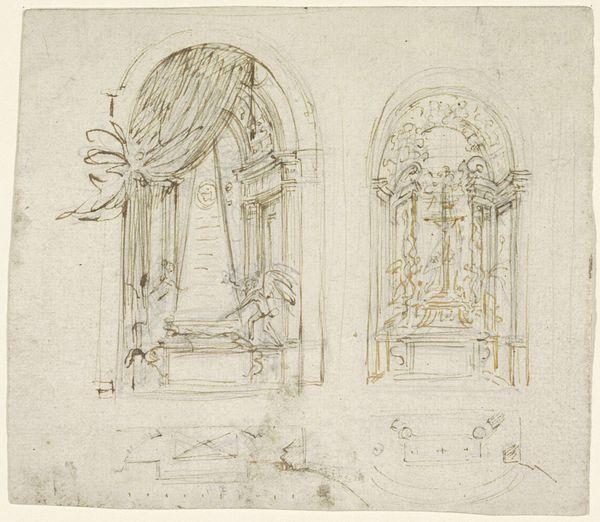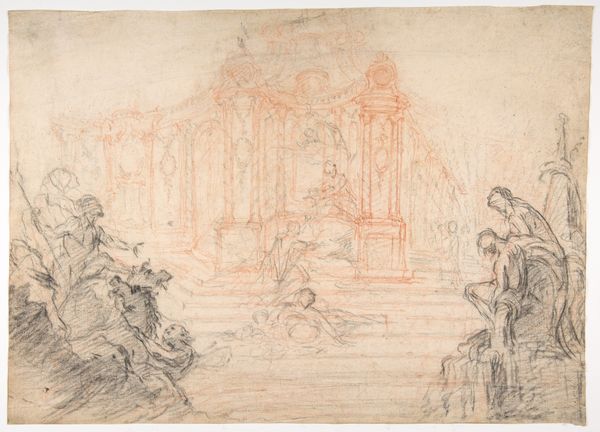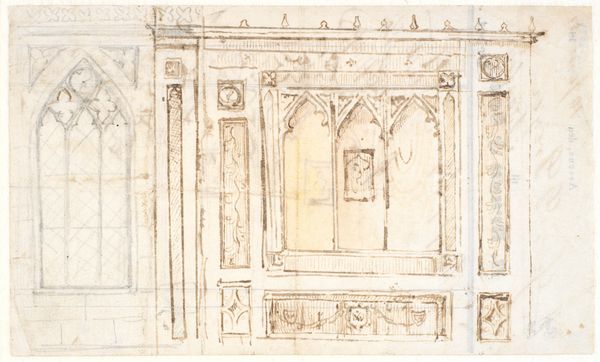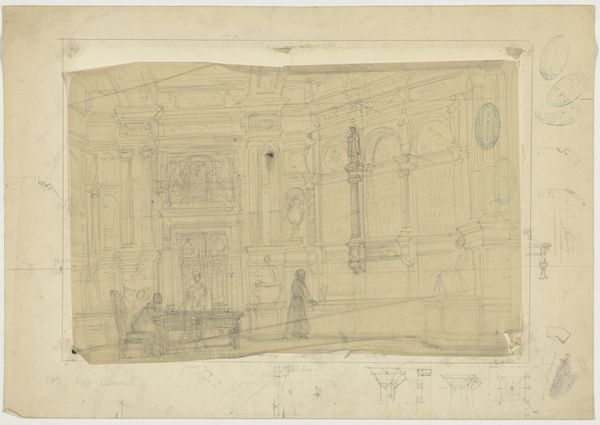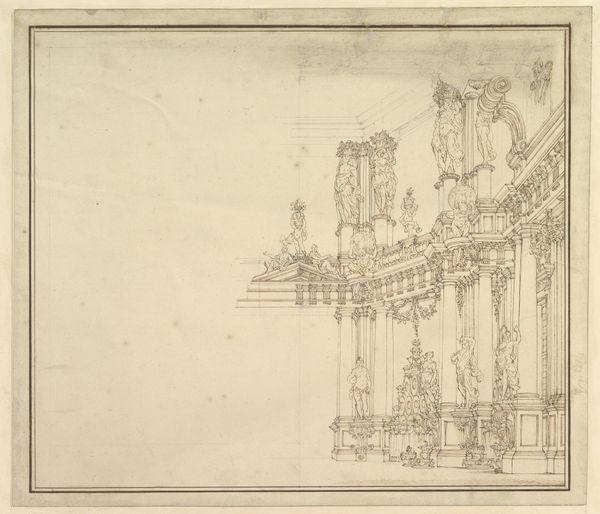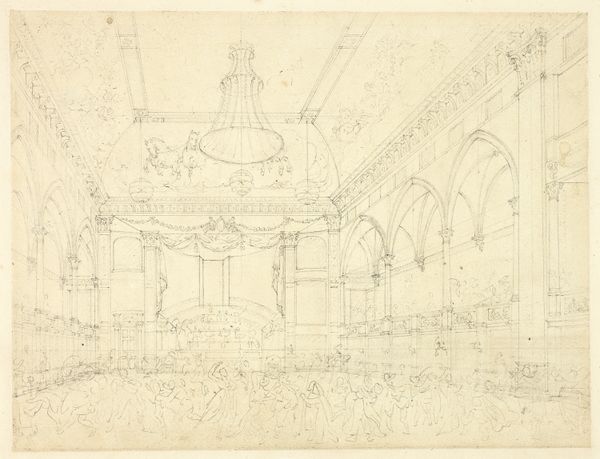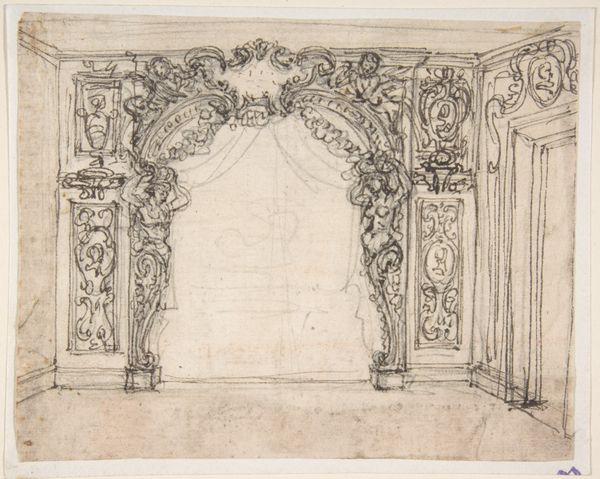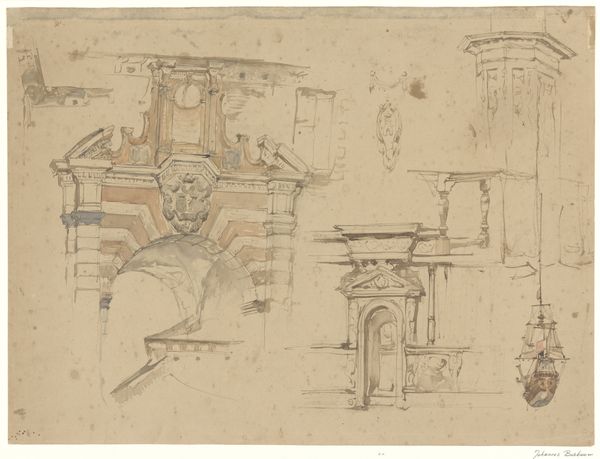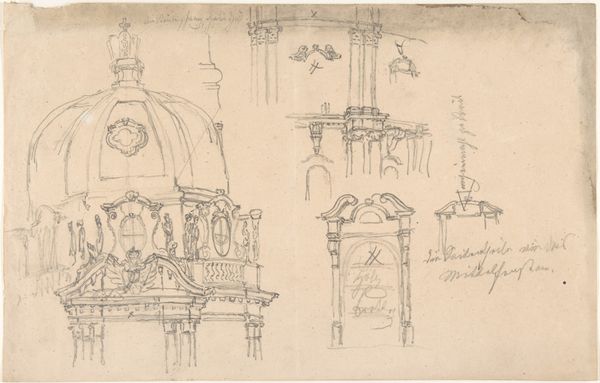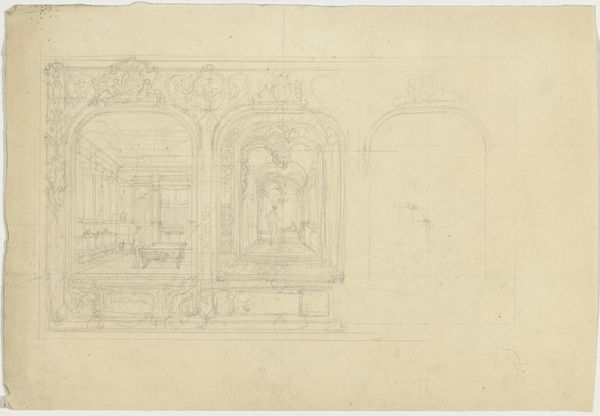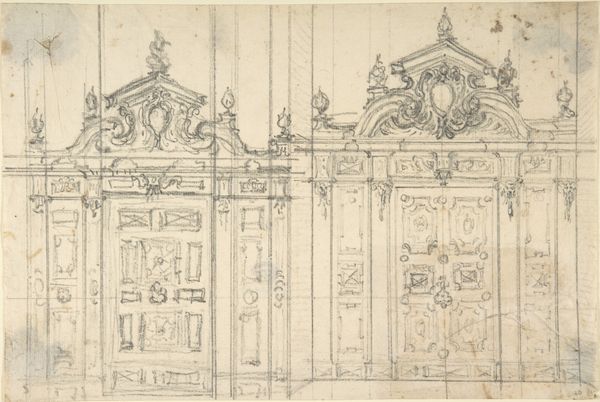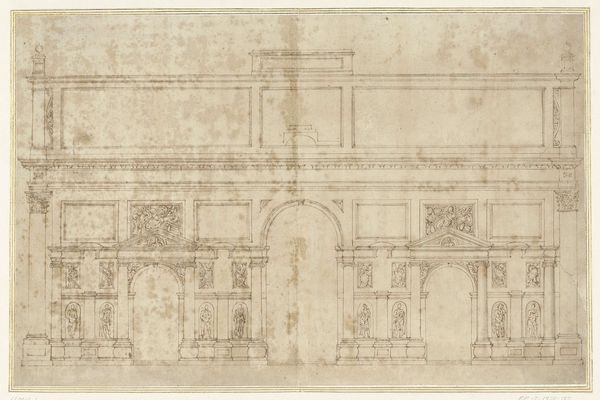
Design for a Catafalgue Used on the Occasion of the Canonization of Saint Mary Magdalen de' Pazzi, Florence, 1669. 1669
0:00
0:00
drawing, architecture
#
drawing
#
baroque
#
form
#
geometric
#
line
#
history-painting
#
italian-renaissance
#
architecture
Dimensions: 10 1/2 x 15 13/16in. (26.7 x 40.2cm)
Copyright: Public Domain
Editor: This is Baldassarre Franceschini’s "Design for a Catafalque Used on the Occasion of the Canonization of Saint Mary Magdalen de' Pazzi, Florence, 1669," a drawing created in 1669. I’m struck by the geometric rigidity, but it still feels so ornate, like a stage design. How do you interpret this work? Curator: It's intriguing, isn’t it? Consider this design within its historical context. Catafalques, elaborate structures built for funerals or canonizations, were temporary stages for projecting power and affirming religious authority in 17th-century Florence. Note the careful lines, suggesting a highly controlled, almost theatrical, representation of the Church. What does this planned, constructed display suggest about the canonization of a woman? Editor: It seems like a real tension between celebrating a Saint but within pretty strict parameters. Like her story is being told but heavily managed. Curator: Precisely! Franceschini, known as Il Volterrano, was working within very specific Baroque conventions, but also within a deeply patriarchal society. How might we read this as a negotiation – or perhaps a suppression – of female spiritual authority within the Church’s hierarchical structure? Notice the very architectural details, they dwarf any representations of the Saint. Editor: So, you're suggesting it’s not just a celebration, but also a statement about power and control. That the very design contains commentary about gender and religious institutions. Curator: Yes, and by analyzing these visual cues and placing them in the historical framework, we begin to unravel those complexities, inviting reflection on how institutional power shapes narratives around even the most celebrated figures. Editor: I hadn't considered the design itself as a form of commentary. I'll definitely look at similar pieces with a more critical eye moving forward. Curator: Excellent! Now you're on your way to reading art with a politically-charged lens, uncovering the quiet ideologies embedded within artistic practices!
Comments
No comments
Be the first to comment and join the conversation on the ultimate creative platform.
